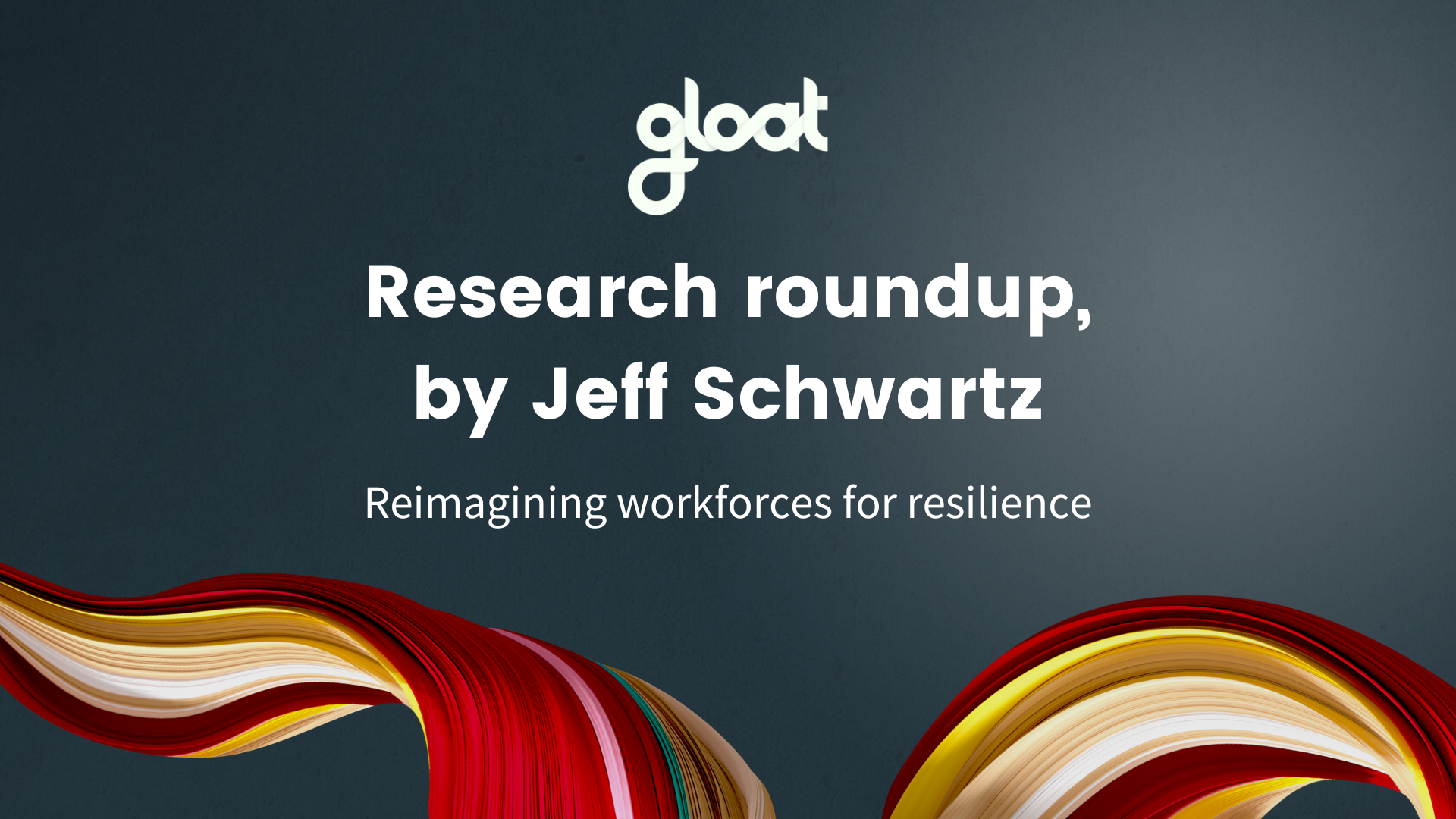5 successful examples of reskilling and upskilling programs
Building a successful upskilling program

Automation, AI, and HR software are transforming the way employees interact with Learning and Development (L&D) opportunities. Static lists of offerings, designed with an employee’s current role and linear career progression in mind, have wilted in favor of more dynamic options—namely, the options provided by talent marketplaces.
As skills build prominence across companies looking for an advantage in the future of work, understanding how to best leverage the capabilities of a workforce is becoming just as valuable as locating them.
Talent leaders across some of the world’s largest companies already have shifted L&D efforts to prioritize building skills—through upskilling, reskilling, and cross-skilling efforts—but in designing their skills programs, they’ve also unlocked core truths about their companies as a whole. The evolution toward purpose-led skills development is reshaping the way businesses train their employees, and to get the most out of it, leaders need to rethink the way they build skills programs.
What is an upskilling program?
An upskilling program is an organization-wide initiative to enhance employees’ skill sets strategically, typically to boost their performance and efficiency. It’s an intentional learning process that allows people to gain exposure to deeper knowledge through a combination of content-based coursework and experiential learning opportunities. A mentoring scheme is one example of a type of upskilling program a company might launch to help employees develop new competencies through peer-to-peer learning.
What is the difference between upskilling and reskilling?
Though the terms are mistakenly used interchangeably, upskilling and reskilling are not synonymous. Upskilling describes processes that help employees deepen and advance their expertise within their current domain while reskilling equips people with new knowledge in fields outside their current area of focus. For example, a software engineer looking to upskill may learn another coding language while someone in the same role might choose to explore copywriting if they were interested in reskilling to move into a marketing role.
How to build a successful upskilling program
If you’re looking to launch an enterprise-wide upskilling program that gets results, consider the following best practices:
#1. Prioritize experiential learning
Even the most compelling L&D content won’t be enough for employees to fully understand new concepts. If you want your people to develop advanced-level expertise, it’s best to pair your learning curriculum with hands-on development opportunities like projects and gigs.
Experiential learning lets employees put their lessons into practice and develop the confidence needed to take ownership of related tasks. Many leaders are leveraging talent marketplaces to match employees with hands-on learning opportunities that align with their skills and interests.
#2. Ensure everyone can participate
Upskilling can’t be reserved for specific employees. Everyone from your newest hires to your most senior executives needs to develop new competencies, particularly as the half-life of skills shrinks and AI advances.
Rather than limiting the scope of your skill-building initiative, use a talent marketplace to empower everyone to get involved. The platforms equip all employees with transparency into the projects, gigs, and full-time roles that are available to them, so that everyone has an equal chance to benefit from these opportunities.
#3. Align skill-building with business needs
If you want to maximize your upskilling program’s impact, make sure people are developing competencies that are relevant to your business priorities. The best skill-building strategies take into account enterprise-wide objectives and employees’ personal goals.
With a talent marketplace’s career pathing tools, employees can explore various directions their careers can take and even identify skill-building opportunities to help them bridge crucial knowledge gaps. Workers should be encouraged to discuss their ambitions with their managers and agree on next steps that benefit both the individual and the business.
#4. Understand that skill needs will change
Too many leaders fall into the trap of viewing skills as an inventory challenge. These executives analyze the skills their business currently needs, without taking into account what capabilities might become more important in the years that follow. While this mindset worked well when our working world was static and slow-moving, it doesn’t hold up in our dynamic Post-Industrial era of work.
Over time, the skills your business needs will change, as will the combination of competencies that various roles require. This is why taking an agile approach to upskilling is crucial: by leveraging AI tools, leaders can align these ever-evolving factors, put them in context, and identify what skills to grow today to be ready for tomorrow. The rise of AI-powered skills intelligence tools like Gloat’s Skills Foundation is crucial for gaining complete insight into the capabilities your workforce has and the knowledge you’ll need to hone in the future.
How 4 organizations transformed their skills programs
Looking to level up upskilling at your organization? Check out how four top-performing companies improved their upskilling programs for some serious skills inspiration:
Mastercard
While nearly all industries have been affected by upheavals, the financial industry’s pivot towards the future of work—and industry—involves some of the most drastic changes to standard operating procedures. With a highly skilled global workforce, Mastercard wanted to make sure all of its 24,000 workers were connected and ready to pivot as needed.
“Now that disruption is the new norm, we really need employees to be on top of their game,” notes Lucrecia Borgonovo, Chief Talent and Organizational Effectiveness Officer. “They need to stay current, stay relevant, learn new skills, and become agile.”
With more than 90% of their workforce registered on their platform, the company unlocked more than $21 million in value through increased productivity, and 100,000 hours of capacity gained. Mastercard’s talent marketplace also helped spur the creation of a cryptocurrency and NFT group to address the growth of emerging technology.
HSBC
The financial leader has thrived throughout its nearly 160-year history by adapting its practices to better address customer needs. To continue that commitment, leaders wanted to ensure the company’s workforce was equipped with the skills needed to solve emerging challenges and innovate effectively.
To do that, they first needed to know what skills currently existed within their organization. With the help of skills intelligence tools, HSBC was able to better understand where they needed to strengthen their institution for a future-fit agenda—resulting in 60,000 hours of productivity unlocked.
Hamish Nesbit, former Group Head of Resourcing, notes that “We now know with greater certainty, what skills sit where and what aims people have, which gives us a much stronger platform to think about increasing our internal mobility and in turn retaining our global corporate knowledge and building employee engagement as they start to understand that more and more of their goals and ambitions can be realized within HSBC.”
Seagate
A juggernaut in the data storage solutions space, Seagate wanted to make sure its employees could not only be trained in emerging technologies but also simplify talent redeployments. Even during the height of the COVID-19 pandemic, company leadership decided against instituting mass layoffs in favor of strategic internal redeployments, putting workers in places to contribute with their full set of skills and strengthening the capabilities needed for the future of work.
“We realized we needed to lift and shift our resources to a new area of business to grow,” says Patricia Frost, Chief People and Places Officer. “We weren’t going to lay anyone off or reduce the workforce. Instead, we decided to grow new operations from within.”
That commitment paid off: The company created $13 million in savings from reduced external hiring costs and $20 million in savings from minimized termination costs. In the future, Seagate plans on using the platform to engage employees in increased mentorship opportunities, dynamic sourcing, dynamic career planning, and more.
Schneider Electric
After an internal survey showed that nearly 50% of exiting employees cited a lack of internal growth opportunities as their primary reason for leaving, leadership at Schneider Electric decided to stop the growing trend. By instituting a talent marketplace, the organization was better able to serve its workers by connecting them with relevant training, projects, and mentorship opportunities.
“What I am learning is that it’s a complete rewrite of HR,” says Jean Pelletier, VP of Digital Talent Transformation. “You need to think differently about speed and how you go deep and broad in an organization using AI. Gloat’s talent marketplace is an absolute game-changer.”
Ultimately, their efforts created $15 million in savings through enhanced productivity and more than 360,000 hours of unlocked capacity.
Determining your company’s best path forward for skills
Better upskilling programs start with the foundational knowledge of where your company’s skills currently stand, where your industry is headed, and which people within your organization are capable of making the jump. Though external hiring will always be a part of adding critical competencies to your organization, finding ways to bring your workforce forward with the changing needs of the future of work is an inevitability—and one of the strongest ways to create engagement within your workforce.
If you’re looking to level up your skill-building program, check out our guide, Skills: your secret weapon for business transformation.






